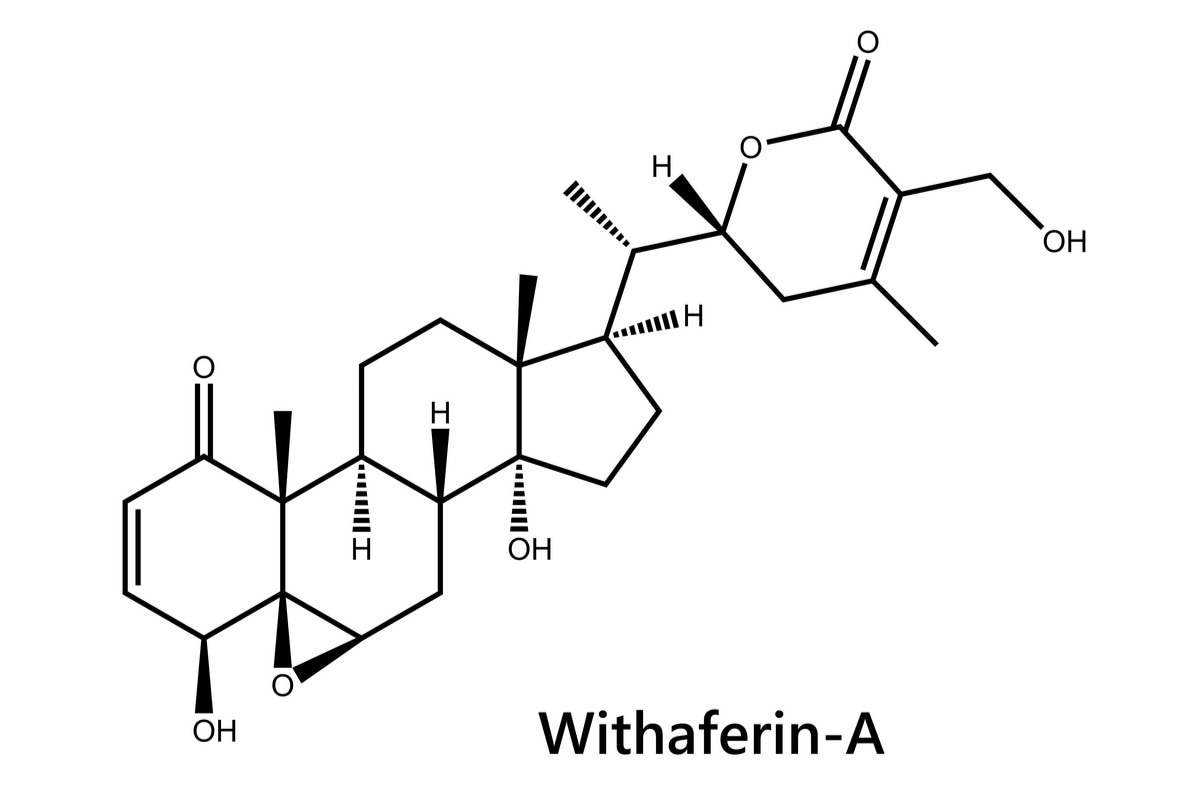Several severe acute respiratory syndrome coronavirus 2 (SARS-CoV-2) variants have emerged due to continual genomic mutations. The World Health Organization (WHO) has classified these variants as variants of concern (VOC) and variants of interest (VOI) as per their virulence, transmission rate, and ability to evade immune responses. Some common VOCs are Alpha, Beta, Gamma, Delta, and Omicron.
 Study: Computational studies evidenced the potential of steroidal lactone to disrupt surface interaction of SARS-CoV-2 spike protein and hACE2. Image Credit: Sci Writers/Shutterstock
Study: Computational studies evidenced the potential of steroidal lactone to disrupt surface interaction of SARS-CoV-2 spike protein and hACE2. Image Credit: Sci Writers/Shutterstock
Background
SARS-CoV-2 contains four major structural proteins, namely, spike (S), nucleocapsid (N), membrane (M), and envelope (E). It also contains non-structural proteins, such as proteases and RNA-dependent RNA polymerases. Scientists reported that the S protein, which is present as a crown-like spike on the outer surface of the virus, initiates viral infection in humans. The receptor-binding domain (RBD) site of the S protein attaches to the Human Angiotensin-Converting Enzyme 2-Receptor (hACE2-R) to initiate the process of pathogenesis. Researchers revealed that the increased virulence of SARS-CoV-2 over SARS-CoV is due to a higher affinity for hACE2, caused by the mutations in the S-RBD amino acid sequence.
Several strategies have been formulated to inhibit or decrease the affinity between S-RBD and ACE2, using small molecules, peptides, polyclonal/monoclonal antibodies, etc. Some of these strategies have been less successful due to continual mutation in the S protein of SARS-CoV-2. All the available coronavirus disease 2019 (COVID-19) vaccines and therapeutics have been developed based on the S protein of the original SARS-CoV-2 strain. Hence, these pharmaceutical approaches have exhibited reduced efficacy against some SARS-CoV-2 VOCs.
Plants are a potential source of diverse secondary metabolites used for drug formulation. Previous studies have shown that many herbs possess antiviral properties and show minimal adverse effects. These studies have also reported that several Chinese and herbal medicines have significantly reduced the clinical symptoms and lowered the mortality rate due to COVID-19. These natural medicines could also improve mild flu-like symptoms.
Scientists stated that computational methods, artificial intelligence, and machine learning are important tools for discovering novel drugs. This is because these methods have accelerated the selection of potent therapeutic molecules through high-throughput screening and have effectively lowered the cost of experiments.
Previous studies have reported that SLs are present in Withania spp, which has been a primary source of modern medicine. These studies have shown that withanolides, a type of SL, possess many medicinal properties, such as cardio-respiratory, anticancer, mood elevator, antioxidant, anti-epileptic, hypocholester-olemic, diuretic, and hypoglycemics properties.
A new study
A prior in silico study has shown that withaferin A has protease inhibitory properties. Importantly, withaferin A exhibited a robust antiviral and immunomodulatory activity that could inhibit the SARS-CoV-2 Main protease (Mpro). Scientists have stated that very few documents are available regarding the antiviral effect of 4- Dehydrowithaferin A and Withalongolide A.
A new study published in Computers in Biology and Medicine has focused on identifying plant secondary metabolites (PSM) having a higher affinity for S-RBD of SARS-CoV-2. In this study, researchers have particularly emphasized steroidal lactones (SL), which can disrupt the early interaction between S-RBD and the host’s ACE-2, using the molecular dynamic simulations (MDS) method. Scientists revealed that this method is more advantageous because it creates a probable native environment by simulating realistic conditions in which the ligands interact with the target molecule.
In this study, researchers have used Molecular Mechanics Poisson-Boltzmann Surface Area (MMPBSA) for their analysis. A lower MMPBSA value infers a stable, energetically advantageous interaction, while a higher value is not so advantageous. In the current study, researchers exploited this approach to select SL that can effectively disrupt the S-RBD and hACE2-R interaction.
Key findings
Researchers evaluated the potential of three SL, namely, 4-Dehydrowithaferin A, Withaferin A, and Withalongolide A, obtained from plant sources, to disrupt the S-RBD and hACE2-R interaction under two conditions (CON–I and CON-II), via the above-mentioned computational method.
CON–I destabilized the interactions between S-RBD and hACE2-R by 4-Dehydrowithaferin A, which was inferred by measuring increased binding energy (BE). Researchers observed an increase in BE from −1028.5 kJ/mol (control) to −896.12 kJ/mol. They reported that 4-Dehydrowithaferin A exhibited a strong interaction with S-RBD GLY496 with a hydrogen bond occupancy (HBO) of 37.33%.
In this study, scientists reported that under CON-II, Withalongolide A had effectively disrupted all types of protein-protein interaction (PPI) of S-RBD of SARS-CoV-2 and hACE2-R. This conclusion was based on the increased BE from −913 kJ/mol (control) to −133.69 kJ/mol. Additionally, scientists reported an increased distance (>3.55 nm) between selected after-action review (AAR) combinations of S-RBD and hACE2-R. The authors revealed that Withalongolide A developed a hydrogen bond with TYR453 of S-RBD (97%, HBO).
Conclusion
In this study, the authors revealed that SL molecules could effectively disrupt the S-RBD and hACE2-R interaction and prevent SARS-CoV-2 from recognizing host cells. Scientists stated that these molecules could aid in designing novel COVID-19 therapeutics.